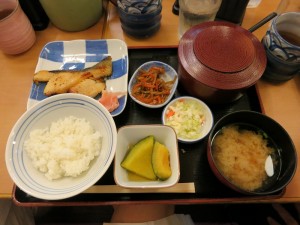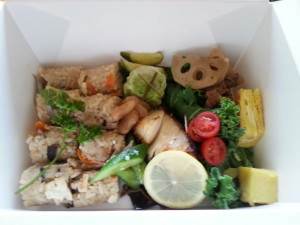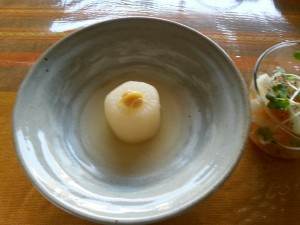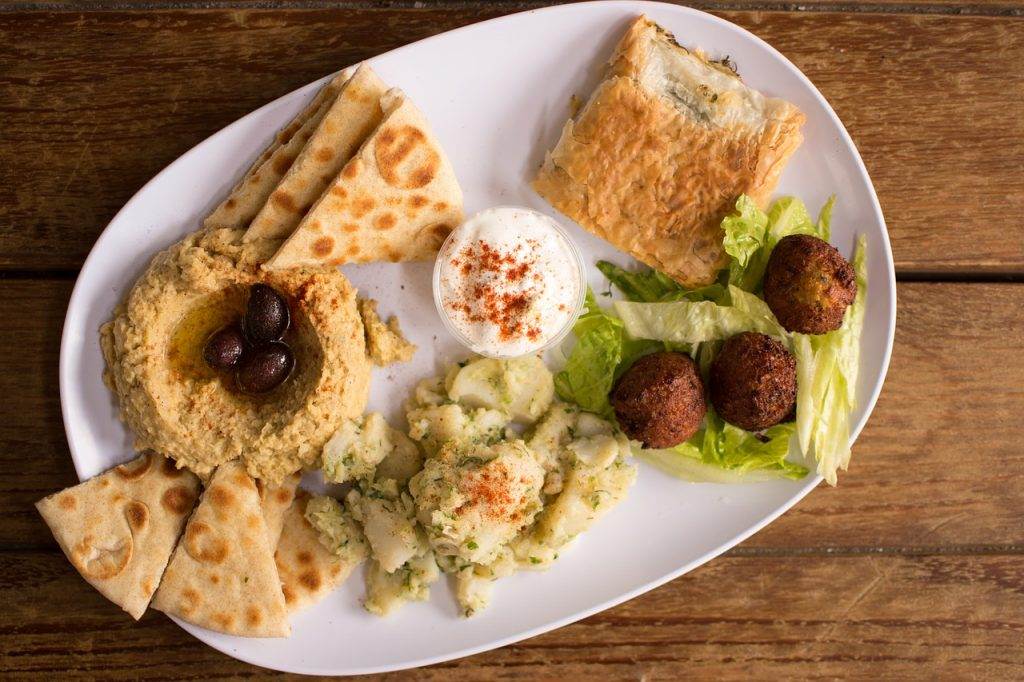In early December, 2013, Japanese Cuisine, known as “washoku” in Japanese, was awarded UNESCO’s intangible cultural assets status. The only other cuisine to receive this honor is French cuisine in 2010. Now, for Japan, a country of foodies, it’s a great honor to receive the UNESCO status…
 From birth, food is a central part of our culture and is used in every celebration thereafter. Food represents your home town, the seasons, the many cultural symbols and much more.
From birth, food is a central part of our culture and is used in every celebration thereafter. Food represents your home town, the seasons, the many cultural symbols and much more.
What is UNESCO? It stands for United Nations Educational, Scientific and Cultural Organization. “Created in 1945, it is known as the “intellectual” agency of the UN. Since its creation , UNESCO’s mission has been to contribute to the building of peace, poverty eradication, lasting development and intercultural dialogue, with education as one of its principal activities to achieve this aim. The Organization is committed to a holistic and humanistic vision of quality education worldwide, the realization of everyone’s right to education, and the belief that education plays a fundamental role in human, social and economic development.” Learn more about UNESCO.
What qualified Japanese food to win this award? Washoku is now recognized and appreciated globally as a food that is interwoven with it’s culture. It’s comprised of fresh locally sourced food, mainly including fish and vegetables. Many of these foods have symbolic meanings, thus it was given this award.
Recently, I’ve noticed that the word “washoku” has been used in the states more than before. But, for those not in the food industry, or who don’t know very little about Japanese food, it’s not very well understood. Here’s my simple explanation.
What is “washoku” or “和食”? Literally, “wa” or “和” is the character for peace or harmony. The “shoku” or “食” means to eat or meal. So, its literal translation is a “harmonious meal”. However, in the everyday use of the language, washoku really means Japanese food as opposed to Western food which is referred to as ” yoshoku (with a long “o” sound) – 洋食”. Usually, anything with “wa” is Japanese and anything with “yo” is Western.
For example, a Japanese tatami room is called a washitsu – 和室 and a Western style room is a yoshitsu – 洋室. A Japanese kimono or any style of Japanese clothing or fuku is wafuku- 和服 and Western clothing is yofuku 洋服 . Also, in tea ceremony, we say wagashi, Japanese sweets. Kashi – means sweet or candy. Just remember the “wa” is Japanese and the “yo” is Western.
Sorry for the long explanation, but sometimes it annoys me when I read translations that really are not used in the right context. Language is alive and changes, so sometimes what makes sense in a textbook doesn’t really make sense from the real spoken language. So, I had to clarify the meaning of the word washoku.
A typical Japanese meal is very well balanced. An easy way to understand how a Japanese meal is put together is to just look at the traditional obento box or lunch box, or the typical set meal called the teishoku. The above photo is a Teishoku. This typically consists of a main dish, which in this case was the miso butterfish. The other dishes balances out the meal and includes rice, miso soup, pickles, a side vegetable dish, which here was pumpkin and kimpira gobo, seasoned burdock. So, we have a protein, starch, vegetables in a variety of cooking methods and flavors for a very satisfying and balanced meal.
Everyday Japanese food doesn’t get tiresome to eat because we like variety. But, for the person cooking the meals, it can be labor intensive. Many of us grew up in households where our mothers spent hours in the kitchen preparing various foods. Because of this tradition, making a lot of different dishes is taken as the norm. I love the variety, but to be honest, as the cook, it really is very time consuming!! When our kids were little, I spent hours in the kitchen because I enjoyed it and also got great pleasure to see them really enjoy their food. Nowadays, I’m slacking as the kids have left the nest. But, recently my girlfriend put together a fabulous homemade obento.


 This is to show you how some Japanese women are so creative and meticulous in what they do! Yuri’s obento included appetizers of stewed daikon, daikon and persimmon salad, okra and katsuobushi shavings, spinach goma ae, Japanese omelette, stewed vegetables, grilled fish, pickles, pickled cucumbers, sweet beans, cherry tomatoes and vegetable mixed rice. Okay, of the 12 dishes, I made 3 and Yuri made 9! And this was lunch. Plus we had dessert. You see what I mean – it’s just really hard to beat the variety of a Japanese washoku meal!
This is to show you how some Japanese women are so creative and meticulous in what they do! Yuri’s obento included appetizers of stewed daikon, daikon and persimmon salad, okra and katsuobushi shavings, spinach goma ae, Japanese omelette, stewed vegetables, grilled fish, pickles, pickled cucumbers, sweet beans, cherry tomatoes and vegetable mixed rice. Okay, of the 12 dishes, I made 3 and Yuri made 9! And this was lunch. Plus we had dessert. You see what I mean – it’s just really hard to beat the variety of a Japanese washoku meal!
If you get the opportunity to try a true washoku meal, enjoy the combination of flavors, but also don’t forget to also enjoy the presentation. We also eat with our eyes. Each container, each presentation is carefully thought out to bring the most pleasure to the meal. We are taught to consider food size, shape, color and placement. Maybe that’s why I ended up going into interior design and feng shui. They really do have a lot in common!


